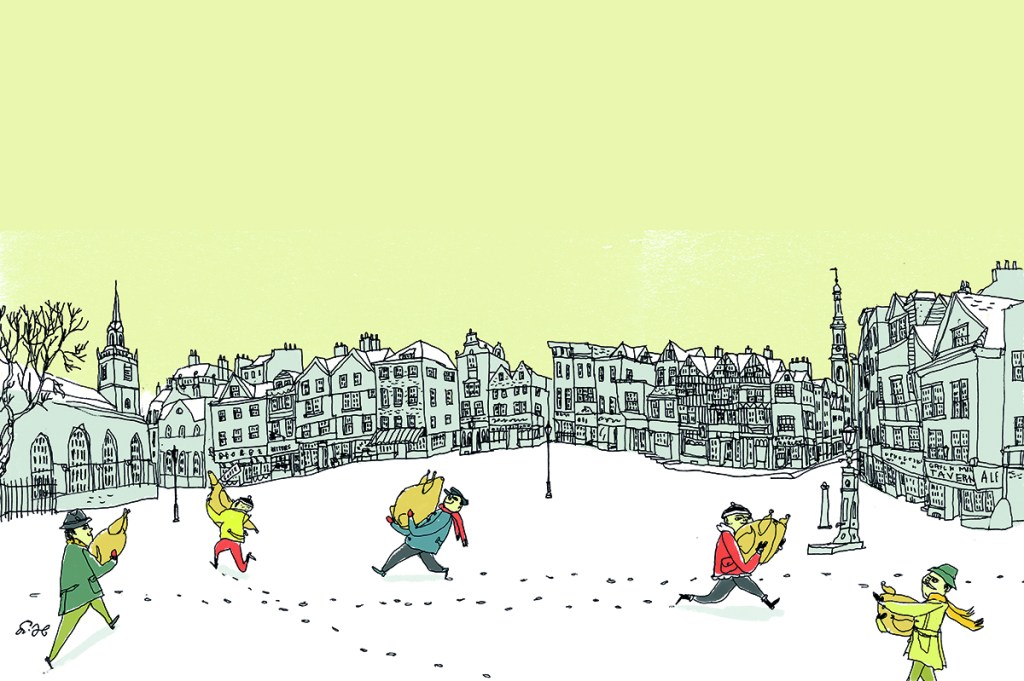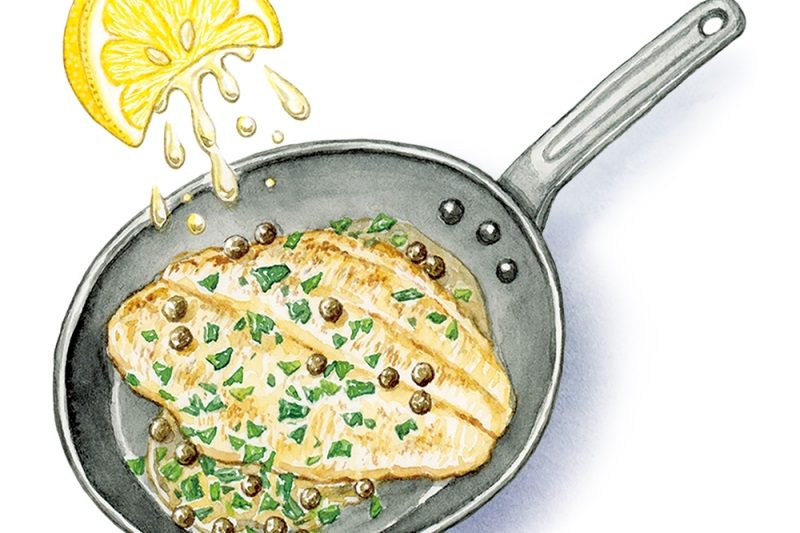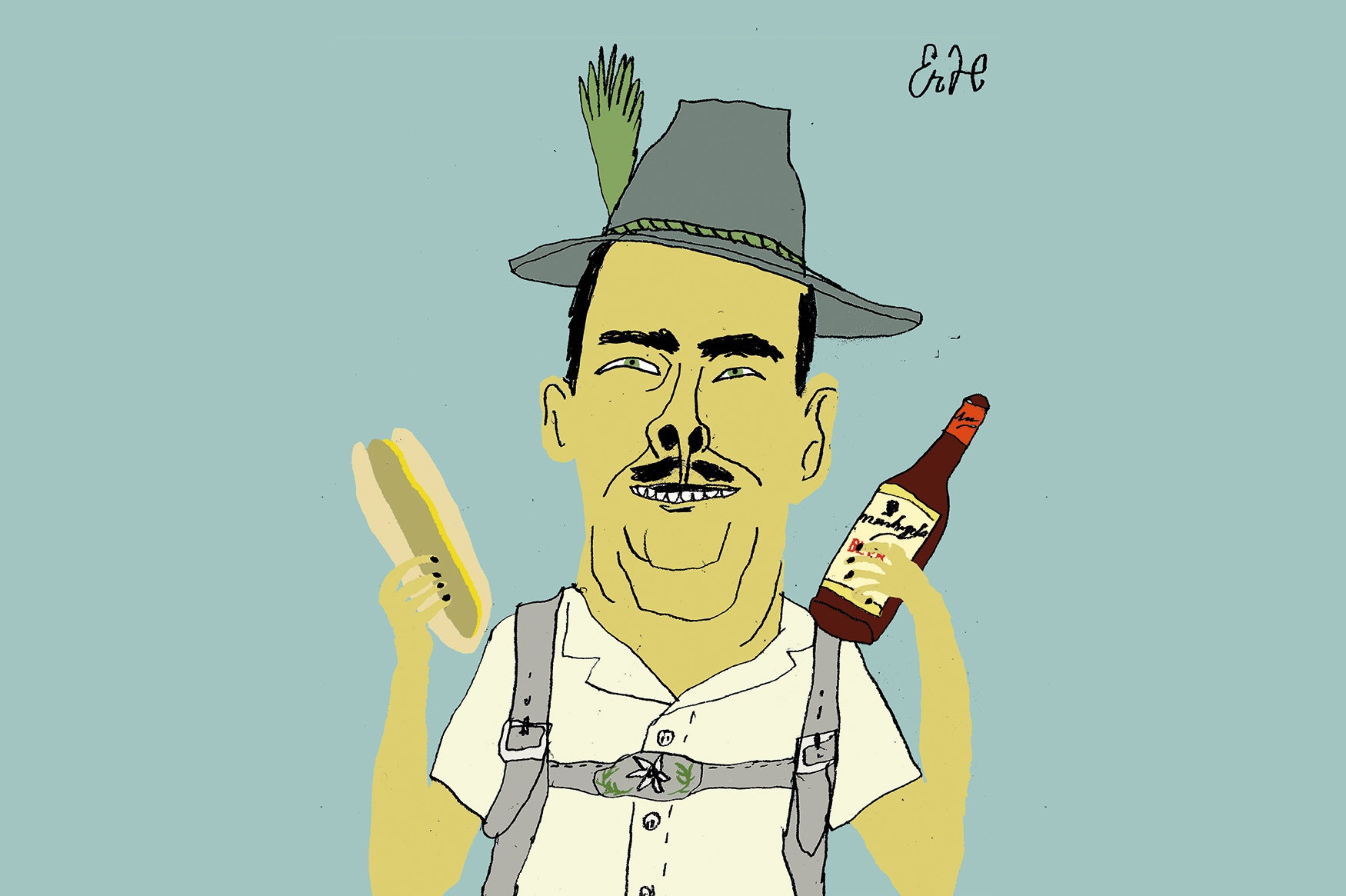One of the more curious habits of the British is their tendency to publish opinion polls in national newspapers about their own food habits. Which way round, for example, are you meant to dress your scone? Is it clotted cream first, then jam — or jam first and cream second? Well, the Queen does it jam first, so that must be the way. Or that other national debate, tea and then milk, or the opposite? When I first arrived in the UK thirteen years ago, I was amused to see how worked up the British get about such questions. Try asking them sometime and see what happens.
A new poll reveals that 58 percent of the British public admit to preferring roast potatoes over turkey. “How could you?” we’re supposed to gasp. “Everyone knows Christmas dinner is about the turkey!” Ten million turkeys are roasted in Britain on Christmas Day — but it wasn’t always so. Goose used to rule the roost. When the Cratchit family gets lucky in A Christmas Carol, they go with goose, the humbler bird. Then Scrooge showed up with his prize turkey, a bird so big that it “never could have stood upon its legs.” The goose was cooked after that. Dickens had decreed it was turkey all round, forever after, and Scrooge did more for the turkey-farming industry than any other individual, real or imagined. Now only 300,000 British geese share the turkeys’ festive fate.
I have to admit goose is better, juicier. King Edward VII didn’t think so. A famous glutton and philanderer, he supposedly once complained that goose is a “damn tricky bird, too much for one, not enough for two.” His Majesty might have reformed his opinion if he’d seen one of my mother-in-law Caroline’s eighteen-pounders. Caroline’s two Christmas geese will serve sixty people over the course of the festivities — braised, roasted and dunked in cassoulet. Like a latter-day Mrs. Cratchit, Caroline feeds an unreasonable number of relatives every holiday season.
Crucially, goose contains the secret ingredient for a perfect roast potato: goose fat. In the days after Christmas, Caroline boils down the goose carcasses for stock. As it thickens, the fat emerges on top — jars and jars of it, enough for the whole of the next year’s potatoes (and some to hand out for Christmas presents besides). For the roast potatoes, she spoons the fat into a roasting tin (about an inch’s worth when it melts) and pops the tin into the oven. The potatoes, cut into quarters or eighths, she gently parboils and seasons with salt and pepper. She then places them in the tin and rolls and coats them in the fat. They don’t feel heavy or oily either — goose fat is downright healthy. It isn’t absorbed by the potatoes as much as other fats and it can be cooked at higher temperatures without burning.
Having watched her at work, I’ve discovered there is another secret ingredient to Caroline’s magic potatoes: her AGA oven. AGAs (short for Aktiebolaget Gas Accumulator) are oil- or gas-fired cast-iron behemoths that radiate intense heat from their center to hot plates on top and three ovens in front — one each for roasting, baking and simmering. Invented in 1922 by the Swedish physicist Gustaf Dalén, the AGA (pronounced “ah-gah”) was immediately popular in the UK, but it really came into its own during World War Two, when it was used by hospitals and munitions works to feed a lot of people efficiently.
As ever in Britain, class comes into play. The AGA became a mark of status and affluence; the racy novels of Jilly Cooper, set among posh, sex-mad equestrians, are known as “AGA sagas.” Mary Berry, star judge of the Great British Baking Show and a professional cook and baker for roughly the past one hundred years, has recently updated The Complete AGA Cookbook. Its success led the Mail on Sunday to describe Berry as being “to AGA what Pavarotti is to opera.” That’s how seriously the British take their AGAs, and how unseriously they take Pavarotti.
The AGA cooks in a most extraordinary way, steaming and roasting its contents at the same time. This allows my mother-in-law to achieve her signature roast potatoes with their crispy, flaking crust and fluffy white insides. I’m lucky enough to have an AGA of my own, and I love it. In my experience, however, cooking with the AGA does take time to master. I used mine continually for nearly three years before I worked out where the heat gauge was, or that there even was a heat gauge. My excuse is that I didn’t ask anyone and no one told me, so I feel this isn’t really the AGA’s fault. In the winter months, the AGA is always on and always hot, heating much of the rest of the house more effectively than all the radiators put together. Indeed, my kitchen would be uninhabitable in the winter without our AGA, and the heat permeates the bedrooms above too.
Shameful as it may be to admit (though I don’t really see why) I’m with the 58 percent of Brits who prefer roast potatoes to any other part of a Christmas dinner. As for turkey or goose? I am not mad about either, but the goose wins simply for its fat and the potatoes that come from it. Turkeys don’t make ’em like that.
This article was originally published in The Spectator’s December 2021 World edition.

























